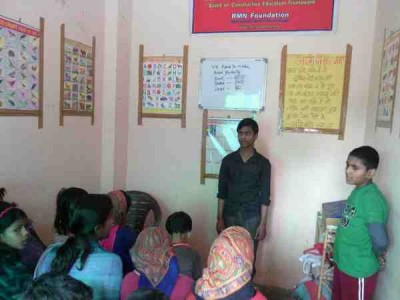
UNICEF Disturbed Over India’s Child Labour Bill

Young children forced by parents to sell eatables outside a school building in New Delhi, India. Photo: Rakesh Raman
UNICEF India said Monday that it welcomes the Rajya Sabha’s recent approval to amend the Child Labour Bill prohibiting children under the age of 14 from working. But it is concerned about one provision that could further disadvantage the most vulnerable children.
The provision, “where the child helps his family or family enterprises, which is other than any hazardous occupations or processes set forth in the Schedule, after his school hours or during vacations” raises serious concerns, as it legitimizes family work and could further disadvantage children from poor families, UNICEF said.
[ Education Dilemma: Let Us Save the Lives of Our School Children ]
UNICEF India is also concerned that the amended Bill substantially reduces the list of professions considered hazardous, which could potentially lead to more children working in unregulated conditions.
According to the 2011 census, child labour rates in India are highest among Scheduled Tribes (ST) at 6.7 per cent and Scheduled Castes (SC) at 3.9 per cent. In both groups, children in rural areas are more likely to work than children from cities. Many girls and boys working are forced to leave school.
[ Also Read: How India Abuses Children’s Right to Education ]
“Under the new Child Labour Act, some forms of child labour may become invisible and the most vulnerable and marginalised children may end up with irregular school attendance, lower levels of learning and could be forced to drop out of school. Secondary enrollment is still lagging behind, especially for the most vulnerable children, many of whom are working,” says UNICEF India’s Chief of Education Euphrates Gobina.
[ क्यों हैं आप स्कूल की शिक्षा से परेशान? छुपाओ मत, मुझे बताओ। ]
There are approximately 10.2 million children working in India. There has been an overall decline in the number of boys and girls working, although child labour has increased in urban areas.
This increase is mainly due to children migrating or being trafficked to work in hazardous small scale industries or construction sites.
Family or home-based work for children in India is often hazardous and includes; working in cotton fields, making bangles and bidis, rolling tobacco, carpet weaving and metal work.
To strengthen the Bill and provide a protective legal framework for children, UNICEF India recommends the removal of “children helping in family enterprises”.
[ शिक्षा का सुधार: आईये सुने अरविन्द केजरीवाल जी के मन की बात ]
This will protect children from being exploited in invisible forms of work, from trafficking and from boys and girls dropping out of school due to long hours of work.
A robust monitoring mechanism ensuring accountability of all stakeholders is essential, particularly because there is no reference to trafficking of children for work in the current Bill.
UNICEF India also recommends an exhaustive list of hazardous occupations to be included and a system be developed to periodically review the same, and include more occupations as they emerge.
UNICEF believes that with these additional changes India’s amended Child Labour Bill will provide a stronger framework to protect children.












